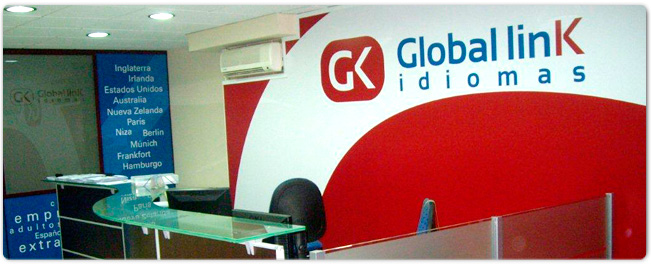
THE SCHOOL
Our school is located in the center of Madrid within walking distance of such emblematic buildings as the National Library, the Prado and Thysen- Bornemisza Museums.
Just off the Paseo de la Castellana, the city's main thoroughfare, and only a two minute walk from busy Colón Square, the school is located on a small tranquil street in one of the liveliest areas of the city with a wide variety of museums, theatres, shops, cafes, and restaurants. The excellent location allowsyou to walk to many of the city's main attractions..
The school's modern facilities consist of 9 comfortable air conditioned classrooms, fully equipped for language instruction. In addition to the didactic material used in the classroom, students may choose to complement their studies by accessing the school's computers with Internet connection for free, WI-FI.
Spanish language classes are offered for all levels - from beginners to advanced.
Because oral expression is emphasized, class size is held to a maximum of 10 students.
Our professional teaching staff, as well as being welcoming and friendly, is highly qualified and experienced in using the most effective methods in language instruction to help students improve their written and oral comprehension and expression in Spanish.
We have developed a complete and integrated study program which provides our students with quality Spanish language classes, modern and well-equipped residential accommodation and a varied recreational and cultural activities program.
METHODOLOGY
Our educational approach focuses on the communication, interactive and personalised attention tha twill allow our students a total immersion in learning Spanish from the first day of class.
Our students can expect a well-structured and flexible program, designed to tackle any learning difficulty that might arise during the course, and that can be adapted to meet the specific needs of each student.
Our course structure complies with the six language levels of the Common European Frameworkof Reference for learning, teaching and evaluation, which was approved during the European Yearof Languages (2001).
| Level A | Level B | Level C |
| A1: Beginner | B1: Pre-intermediate | C1: Upper-intermediate |
| A2: Elementary | B2: Intermediate | C2: Advanced |
The Curriculum Plan of the Cervantes Institute places Spanish at the highest possible level of developmentin the description and analysis of the linguistic material used for study by speakers of other languages.The Plan will be the reference document, not only for the teaching staff of the more than 60 centersof the Cervantes Institute in Europe, America, Asia and Africa, but also for all professionals involvedin the teaching and evaluation of Spanish as a foreign language.

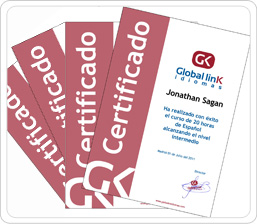
Teachings Staff
Our Spanish professors have all received Master's degrees in teaching, and are specifically trained in ELE (Spanish as a Foreign Language). Their Spanish teaching experience allows them the flexibility of adapting their planning to fit the specific needs of each student.
To keep their skills up-to-date, they attend regular training courses organized by the Head of Studies, and they are also subjected to periodic performance evaluations.
Evaluation
Following the European Framework of Reference, several factors will be assessed for each student: attendance, interest and motivation, as well as spoken and written ability levels.
At the end of each course, having attended at least 90% of the classes, the student will receive a certified diploma confirming their level as corresponds to the European Framework of Reference.
SPORTS FACILITIES
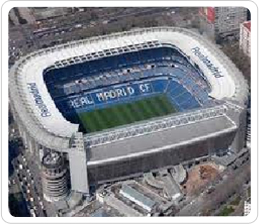
- Numerous municipal sports centers with tennis andbasketball courts, soccer fields, swimming pools.
- Golf Courses.
- Bicycle paths.
- Race Track.
- Caja Mágica (Tennis Courts).
AMENITIES
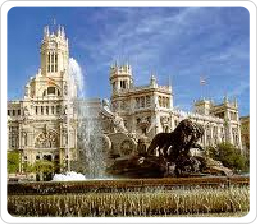
- Museums (Prado, Thyssen-Bornemisza, Queen Sofía, Archeology…)
- Theaters (Royal Theater, Fernán Gómez, Lope de Vega,) cinemas,…
- Royal Palace, Almudena Cathedral…
- Parks and Gardens (Sabatini Garden, Royal Botanical Gardenof Madrid, Juan Carlos I Park, )
- Banks, post offices,...
- Shops, malls, department stores,…
- Wide variety of restaurants, cafes, bars, pubs, …
GETTING TO MADRID
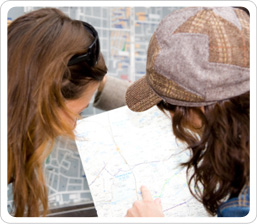
By plane
Madrid Barajas airport is the main airport in Spain and is among the five most important in Europe, with more than 40 million passengers per year. All of the world's major airline companies operate from this airport which is situated northeast of the city, 13 km from Puerta del Sol.
By train
The state-owned company, RENFE, carries passengers and freight throughout Spain. Numerous types of trains provide diverse routes throughout the country. Neighboring countries, Portuga land France, as well as the rest of the European Union countries are connected with Madrid though this train service.
By coach
In general, this means of transport is the most widely used in Spain and is also the most economical. The main long-distance coach terminal in Madrid is the South Terminal (La Estación Sur de Autobuses) (metro: Mendez Álvaro) located near the Atocha train station, however there are also several other small coach terminals in the city. Some coach lines connect Spain with other major European cities.
